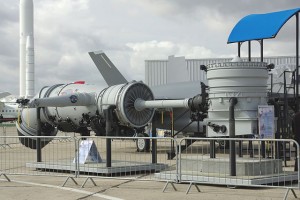Last week, the Pentagon grounded all of their existing F-35 Joint Strike Fighters, after one of them caught on fire while preparing for takeoff at Eglin Air Force Base in Florida on June 23. This is just another setback in what’s become the costliest weapons program in U.S. history.
The development of the F-35 started in 2001. It was originally supposed to be completed by 2007; it’s now seven years behind schedule and approximately 70 percent overbudget, despite the U. S. cutting back on orders for the plane.
To understand how something like this could happen, you need only to look at the infamous second engine project. All early F-35s were to be powered by Pratt & Whitney F135 engines, with competitive bidding on engines taking place for later lots of production. The competitors in this case were GE and Rolls-Royce, working together in a joint project called the F136. In 2005, GE and Rolls-Royce were awarded a $2.4 billion contract by the DoD to develop their engine.
However, starting in 2006, the Defense Department’s budget requests only included the Pratt & Whitney engine, and not the GE/Rolls-Royce one. This didn’t deter Congress for adding appropriations for the engine to the budget every year, though. Maybe this was because a GE plant in then Minority Leader and now Speaker of the House John Boehner’s district in Ohio was building the engines, as was a Rolls-Royce engine plant in then Representative and now Indiana Governor Mike Pence’s district, The Indiana contract was ironic considering Pence’s publicly avowed stance on earmark reform at the time, but I digress…
In February 2011, a bipartisan coalition of Tea Party Republicans and Democrats killed funding for the second engine. However, in May of that year, the House Armed Services Committee added a provision that limited spending for improvements to the F-35 Lightning II propulsion system, which focused only on Pratt & Whitney engines, unless the secretary of defense continued with the General Electric engine project. Finally, in December of 2011, GE and Rolls-Royce discontinued development of the F136 engine.
So far, the F-35 project has cost us almost $400 billion, with estimated operating and maintenance expenses over the projected 55 year life-cycle in the $1 trillion range. In case you haven’t noticed, that’s a lot of money. To put it in perspective, the whole Manhattan Project cost $55 billion in today’s dollars. Or, to put it in a more humanitarian way, with the full amount spent on the F-35 at our disposal, we could buy every homeless person in America a $664,000 home.
I know where I’d rather see the money go…


